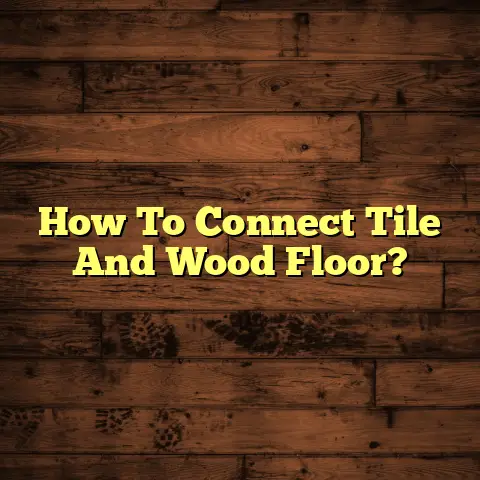Cut Vinyl With Knife? (3 Blade Mistakes!)
Vinyl flooring – it’s the chameleon of the flooring world!
It’s durable, cost-effective, and surprisingly stylish these days.
I’ve seen it transform everything from drab basements to chic kitchens, and it’s no wonder more and more homeowners are tackling vinyl installation themselves.
The rise of DIY is fantastic; I love seeing people empowered to improve their homes.
But here’s a truth bomb: cutting vinyl with a knife looks easy.
However, it’s a skill that requires precision.
I’ve seen too many projects go south because of a few easily avoidable mistakes.
And trust me, a botched vinyl job isn’t pretty (or cheap to fix!).
That’s why I’m here to spill the beans on the three biggest blade blunders I see contractors and DIYers make when cutting vinyl.
Avoid these, and you’ll be well on your way to a professional-looking floor.
Mess them up, and you might as well throw your money (and your back!) out the window.
So, grab your utility knife (the right one, mind you), and let’s dive in!
Section 1: Understanding Vinyl Flooring
Okay, let’s get down to brass tacks. What is vinyl flooring, anyway?
Well, it’s not your grandma’s linoleum!
Today’s vinyl is a far cry from those old, flimsy sheets.
We’re talking about some seriously impressive stuff.
You’ve got your Luxury Vinyl Planks (LVP), which mimic the look of hardwood with incredible realism.
I’m talking about textures, grain patterns, and even subtle variations in color.
Then there are vinyl sheets, great for bathrooms and kitchens because they’re virtually seamless and waterproof.
And let’s not forget vinyl tiles, perfect for creating custom patterns and designs.
Each type has its pros and cons, but they all share one thing in common: at some point, you’re going to have to cut them.
Cutting is absolutely critical for a successful installation.
Think about it: you need to fit around doorways, navigate corners, and make precise cuts along walls.
A sloppy cut can ruin the whole look, leaving gaps, overlaps, or just plain ugly edges.
Now, when it comes to tools, the knife is your best friend.
Sure, you could use a power saw for some cuts, but for most vinyl jobs, a good utility knife is king.
You’ll find various types of knives, from basic snap-off blade models to more specialized vinyl cutters with curved blades and adjustable depths.
I personally prefer a heavy-duty utility knife with a comfortable grip and a blade that locks securely.
Safety first, always!
Section 2: The Importance of the Right Blade
Alright, listen up because this is where things get serious.
You might think, “A blade is a blade, right?” Wrong!
Using the right blade for cutting vinyl is as important as using the right paint for your walls.
It’s the difference between a smooth, professional finish and a frustrating, amateur-looking mess.
Let’s talk about blade types.
You’ve got your standard utility blades, which are fine for some tasks, but they tend to dull quickly when cutting vinyl.
Then you have specialized vinyl cutting blades, often made of harder steel and designed with a sharper, more precise edge.
Some even have a hooked shape, which helps to score the vinyl without cutting all the way through on the first pass.
The material of the blade matters, too.
High-carbon steel blades are generally sharper and hold their edge longer than stainless steel blades.
But they can also be more brittle and prone to snapping if you’re not careful.
And don’t forget about sharpness!
A dull blade is not only ineffective, it’s downright dangerous.
You’ll end up using more force, which increases the risk of slipping and cutting yourself.
Plus, a dull blade will tear and shred the vinyl instead of cutting it cleanly.
So, how does the right blade affect the cutting process?
Well, a sharp, high-quality blade will glide through the vinyl with minimal effort, leaving a clean, crisp edge.
It will also reduce the risk of damaging the vinyl and make the whole process much faster and easier.
Trust me, investing in a good blade is worth every penny.
Section 3: Mistake #1 – Using a Dull Blade
Okay, let’s get to the first big mistake I see all the time: using a dull blade.
I know, it sounds obvious, but you’d be surprised how many people try to get away with using a blade that’s seen better days.
They think, “Oh, it’s just vinyl, it’s not that tough.”
Wrong again!
Vinyl may not be as hard as hardwood, but it’s still a resilient material.
And a dull blade will struggle to cut through it cleanly.
So, what are the consequences of cutting with a dull blade?
Well, for starters, you’ll end up with jagged edges.
Instead of a smooth, clean cut, you’ll have a rough, uneven edge that looks unprofessional and is difficult to work with.
You’ll also likely experience tearing.
The dull blade will grab and pull at the vinyl, causing it to tear and shred instead of cutting cleanly.
This is especially common with thinner vinyl sheets.
And let’s not forget about uneven cuts.
A dull blade requires more force, which makes it harder to control the knife.
You’ll end up with cuts that wander off course, leaving you with pieces that don’t fit properly.
I remember one time I was working on a bathroom remodel.
The homeowner had tried to install vinyl sheet flooring himself, but he’d used a dull blade and ended up with a total disaster.
The edges were all jagged and torn, and the pieces didn’t fit together at all.
He’d wasted an entire sheet of vinyl and had to call me in to fix the mess.
I ended up having to remove all the damaged vinyl, recut new pieces with a sharp blade, and reinstall the whole thing.
It cost him twice as much as it would have if he’d just used a sharp blade in the first place.
The moral of the story? Don’t be cheap when it comes to blades.
Replace them often, and always use a sharp one for cutting vinyl.
Section 4: Mistake #2 – Incorrect Blade Angle
Alright, let’s move on to the second common mistake: cutting at the wrong angle.
This is something that even experienced DIYers sometimes struggle with.
The angle at which you hold the blade can have a huge impact on the quality of the cut and the overall finish of the flooring.
So, what’s the right angle?
Well, it depends on the type of vinyl you’re cutting and the type of cut you’re making.
But generally speaking, you want to hold the blade at a low angle, around 30 to 45 degrees.
This will allow the blade to glide smoothly through the vinyl without tearing or snagging.
Cutting at too steep of an angle can cause the blade to dig into the vinyl, creating a jagged edge and making it difficult to control the knife.
It can also cause the vinyl to buckle or warp, which can make it difficult to fit the pieces together properly.
I’ve seen this happen a lot when people are trying to cut around corners or make intricate shapes.
They get impatient and try to force the blade through the vinyl, which just leads to a messy, uneven cut.
One time I was helping a friend install LVP in his kitchen.
He was doing a pretty good job overall, but he kept struggling to cut the planks around the kitchen island.
He was holding the blade at almost a 90-degree angle and trying to saw through the vinyl.
I told him to try lowering the angle and using a smoother, more controlled motion.
He was amazed at how much easier it was.
The blade glided through the vinyl like butter, and he ended up with a much cleaner, more professional-looking cut.
So, remember, when cutting vinyl, keep the blade angle low and use a smooth, controlled motion.
It will make a huge difference in the quality of your cuts.
Section 5: Mistake #3 – Not Using the Right Cutting Technique
Now, let’s talk about the third big mistake: failing to employ the correct cutting technique.
Cutting vinyl isn’t just about holding a knife and hacking away.
There are specific techniques that will help you achieve clean, accurate cuts.
One of the most important techniques is scoring and snapping.
This involves using the knife to score a line on the surface of the vinyl, then bending the vinyl along that line until it snaps.
This technique is particularly useful for cutting straight lines in thicker vinyl planks or tiles.
To score the vinyl, hold the blade at a low angle and apply firm, even pressure.
You don’t want to cut all the way through the vinyl, just create a shallow groove.
Then, bend the vinyl along the scored line, with the scored side facing up.
Apply gentle, even pressure until the vinyl snaps cleanly.
Another important technique is using a straight edge.
This is essential for making accurate, straight cuts, especially when cutting large sheets of vinyl.
Use a metal ruler or a carpenter’s square as a guide, and hold it firmly in place while you cut.
Make sure the blade is always in contact with the straight edge, and use a smooth, controlled motion.
I’ve seen so many people try to freehand their cuts, and it almost always ends in disaster.
The cuts are never straight, and the pieces don’t fit together properly.
I also see people rushing the cutting process, trying to cut through the vinyl in one pass.
This is a recipe for disaster.
It’s much better to make multiple shallow cuts than to try to force the blade through the vinyl in one go.
Taking your time and using the right technique will result in cleaner, more accurate cuts and a much better-looking floor.
Section 6: Real-Life Consequences of Blade Mistakes
Okay, let’s get real for a minute.
We’ve talked about the mistakes, but what are the actual consequences of making them?
Well, I’ve seen it all.
I’ve seen projects delayed, budgets blown, and homeowners reduced to tears.
It’s not pretty.
I remember one client who tried to save money by installing vinyl flooring in his basement himself.
He thought he was being smart, but he ended up making almost every mistake in the book.
He used a dull blade, cut at the wrong angle, and didn’t use the right cutting technique.
The result was a disaster.
The vinyl was torn, jagged, and didn’t fit together at all.
He ended up having to rip out the entire floor and hire me to start from scratch.
It cost him twice as much as it would have if he’d just hired a professional in the first place.
I also remember another client who was trying to install vinyl sheet flooring in her kitchen.
She was so focused on getting the measurements right that she completely forgot about the blade.
She used the same blade for the entire project, and by the end, it was so dull that it was practically useless.
The edges of the vinyl were all frayed and uneven, and the floor looked like it had been attacked by a pack of wild animals.
She was so frustrated that she almost gave up on the project altogether.
I had to come in and recut all the edges with a sharp blade, which took hours.
The moral of these stories? Don’t underestimate the importance of proper cutting techniques.
It can save you time, money, and a whole lot of frustration.
Take the time to learn the right techniques, use the right tools, and don’t be afraid to ask for help if you need it.
Your floor (and your sanity) will thank you for it.
Conclusion
So, there you have it.
The three biggest blade mistakes I see people make when cutting vinyl.
Using a dull blade, cutting at the wrong angle, and not using the right cutting technique.
Avoid these mistakes, and you’ll be well on your way to a professional-looking vinyl floor.
Remember, vinyl flooring is a fantastic option for homeowners and DIY enthusiasts alike.
It’s durable, cost-effective, and surprisingly stylish.
But like any flooring project, it requires attention to detail.
Taking the time to understand the proper cutting techniques and using the right tools will make all the difference in the world.
Don’t be afraid to experiment, practice, and learn from your mistakes.
And most importantly, don’t be afraid to ask for help if you need it.
There are plenty of resources available online and in your local community.
With a little bit of knowledge and a lot of patience, you can achieve a beautiful, long-lasting vinyl floor that you’ll be proud of for years to come.
Now go out there and get cutting!
Just remember to keep that blade sharp, the angle low, and the technique precise.
Happy flooring!





